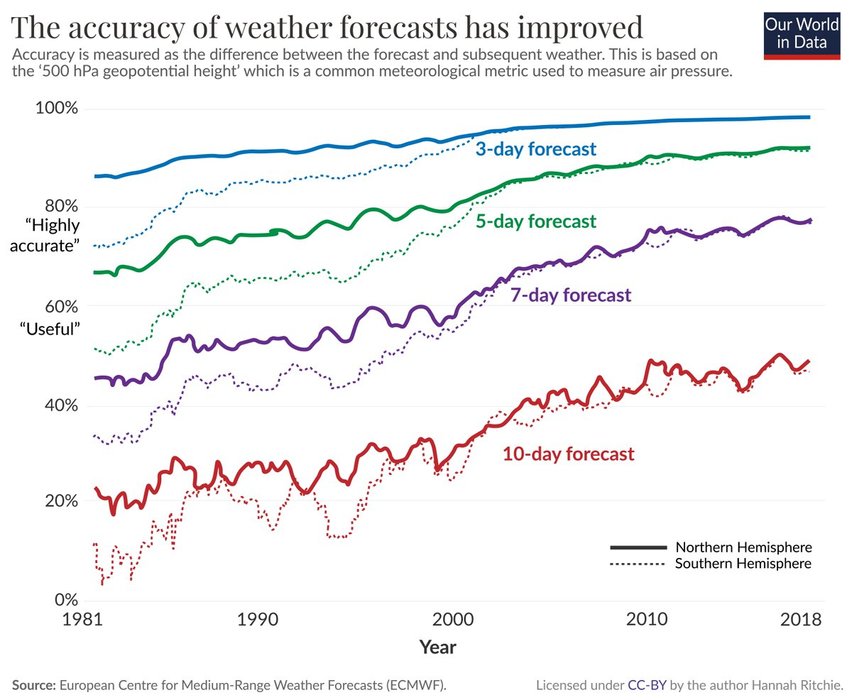
Weather forecasts have become much more accurate. A four-day forecast today is as accurate as a one-day forecast 30 years ago. The chart here shows the difference between the forecast and the actual weather outcome for forecasts 3, 5, 7, and 10 days in advance. The metric used here is the “500 hPa geopotential height”, a commonly used meteorological measure of air pressure — which dictates weather patterns. The solid line is for the Northern Hemisphere, and the dashed line is for the Southern. Three-day forecasts have been pretty accurate since the 1980s, and have still gotten a lot better over time. Today the accuracy is around 97%. The biggest improvements we’ve seen are for longer timeframes. By the early 2000s, 5-day forecasts were “highly accurate” and 7-day forecasts are reaching that threshold today. 10-day forecasts aren’t quite there yet but are getting better. This data comes from the European Centre for Medium-Range Weather Forecasts (ECMWF), which produces global numerical weather models and publishes analyses of its errors over time. While national weather agencies use much higher-resolution processing to get local forecasts, these global models provide a crucial input into those more local systems.

Floehr’s analysis uncovered two big trends in weather prediction. One was toward greater relative accuracy in the private sector—which of course was totally dependent on the National Weather Service data for its forecasts. The other was the astonishing improvement in all weather predictions. The five-day-out forecast in 2016 was as accurate as the
... See more